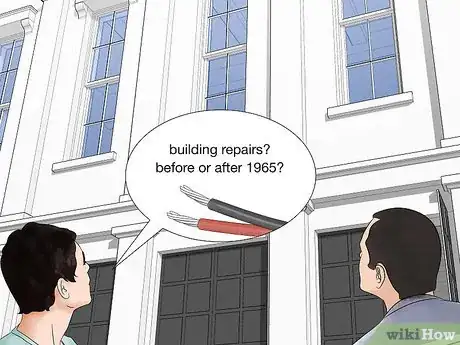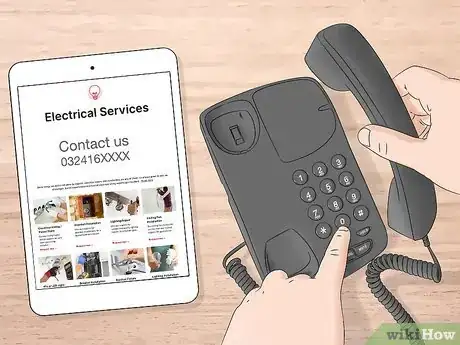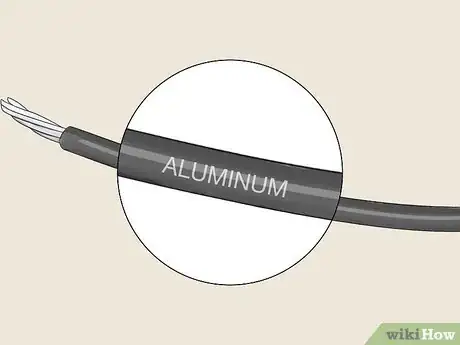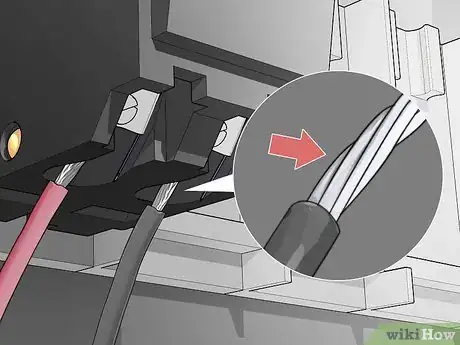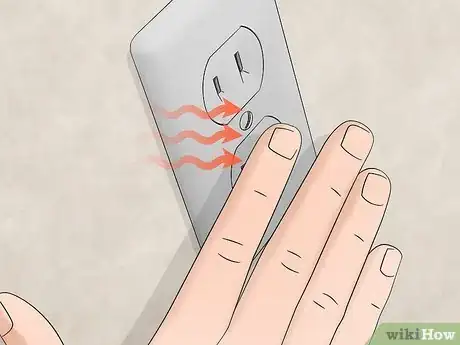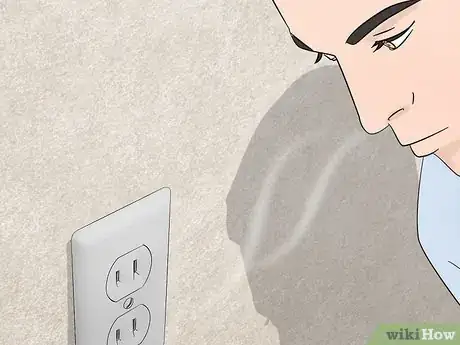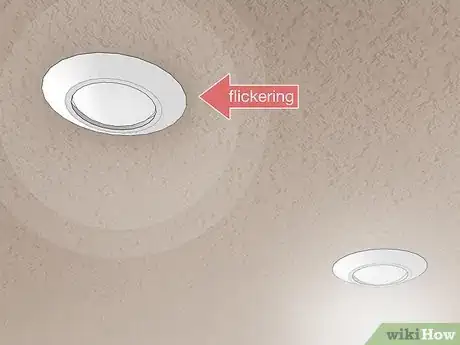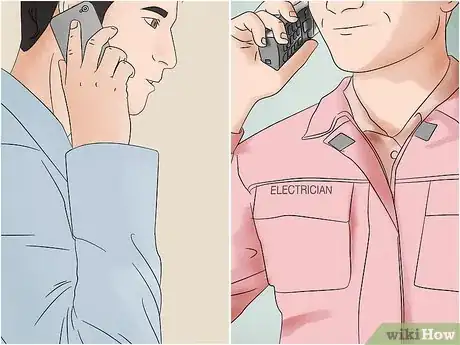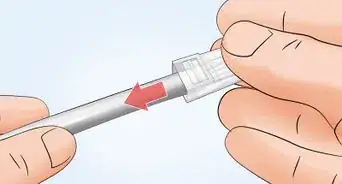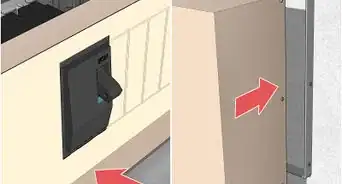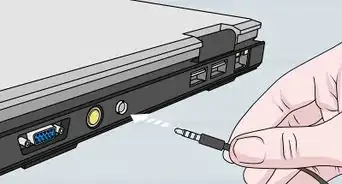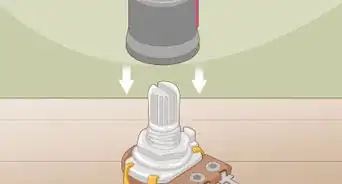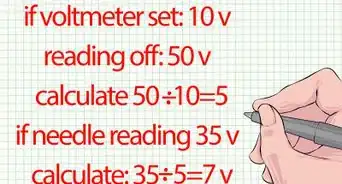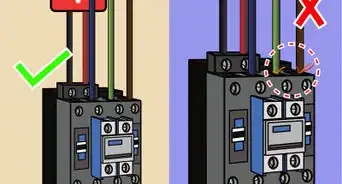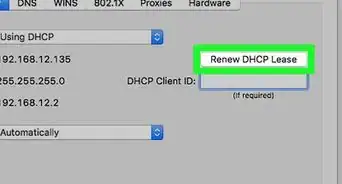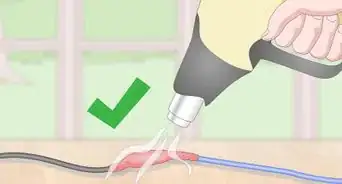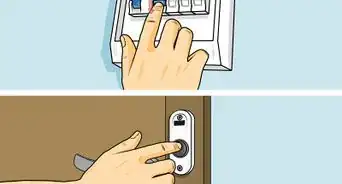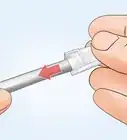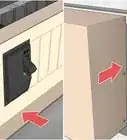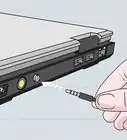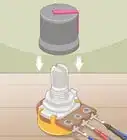This article was co-authored by Marvin Woo. Marvin Woo is a licensed electrician and the Owner of Woo's Electrical & Appliance based in East O’ahu. With over two decades of experience, he specializes in troubleshooting issues and maintaining residential electrical systems. Marvin is both licensed and insured to complete electrical work in the state of Hawaii.
There are 7 references cited in this article, which can be found at the bottom of the page.
This article has been viewed 34,716 times.
Aluminum wiring may be a fire risk, but it is fairly easy to identify in a building. Your building's date of construction and subsequent repairs may be a clue since aluminum wiring was widely-used between 1965-1974, when the Consumer Product Safety Commission (CPSC) deemed it unsafe. You can also visually identify aluminum wiring, or hire a professional. If you do have this type of wiring, an electrician can suggest the best way to change it or repair conduits to prevent the risk of fire.
Steps
Tracing the Building's History
-
1Find out what year the building was built. Knowing what year a building was constructed will give you a good idea of whether or not aluminum wiring was used instead of another metal. If you do not already know, ask the building's owner or previous owner, landlord, or superintendent. If the building was constructed between 1965 and 1973, it is likely that is has aluminum wiring.
- If you can't get the information this way, visit the Library of Congress website at http://www.loc.gov/pictures/collection/hh/ to see if historical records pertaining to the building are available.
- Helpful historical documents could include building plans or contracts.
-
2Ask about building repairs if the building was constructed before 1965. Even if the building was built before the rise in popularity of aluminum wiring, don't assume that your wiring is not aluminum. If circuits were added or modified after 1965, installers may have used aluminum wiring for the repairs. Inquire with the building's management company, owner, landlord, or superintendent to see what electrical work was done on the building and when it was done.[1]Advertisement
-
3Speak to neighbors if you can't find the information. If you can't find the information you're looking for about the building's history, ask owners or tenant of neighboring buildings what they can tell you about it. Neighbors may remember when the building was constructed.[2]
- Keep in mind that this may not be the most reliable way to get information, and double check any information you get from your neighbors if you can.
Inspecting the Wiring Carefully
-
1Hire an electrician to get the most accurate assessment. To identify aluminum wiring in the most accurate way possible, hire an electrician to check the building's wiring. They will also be able to assess the condition of the wiring and recommend a course of action to ensure fire prevention. Look online to find a local electrician and book an appointment.[3]
- Before deciding on a plan for electrical work, get price estimates from different electricians for the work they propose.
-
2Check cables that run through the basement or attic. Visible cables can usually be found in either the attic or basement of a building, usually away from sight. Visually inspect these cables to look for labelling on the plastic tubing around the wires.[4] If the wiring is aluminum, it will say "AL", "ALUM", or "Aluminum".[5]
- This marking should be visible every 12 inches (30 cm) on the plastic tubing.
- These cables may also be visible between open floor joists or at the electrical panel of the building.
-
3Look at the exposed wires in switches or outlets without touching them. Aluminum wiring is silver.[6] While copper, the other most common metal used, is a distinct yellow color. Check any uncovered outlets or switches to see the color of the exposed wires.[7] Be sure not to touch live wires, which could be very dangerous.[8]
Recognizing Aluminum Wiring Problems
-
1Feel the temperature of the plates on your electrical outlets or switches. The overheating of aluminum wiring can be felt through its connection points with your walls. Touch the surface of the plate covers on your outlets and switches, which should feel cool or neutral. If they are warm, it may be a sign of a dangerous electrical issue.[9]
-
2Check for strange odors around your outlets or switches. Overheated aluminum wiring can cause materials inside your walls to burn, causing strange smells, particularly at connection points. See if any notable odors linger around electrical outlets and light switches. Commonly, this is normally the smell of burning plastic.[10]
-
3Take note of flickering or glaring lights and eliminate possible causes. Aluminum wiring can cause connectivity problems, which may result in problems with your lighting. Take note if your lights flicker faintly or seem to be especially bright. Try changing the light bulb to see if the problem persists.[11]
-
4Contact an electrician right away if you notice these problems. Indications of faulty aluminum wiring should also be considered a fire warning and treated accordingly. Contact an electrician at the first sign of overheating to have your wiring tested. If you are renting a property, contact your landlord or superintendent immediately to alert them of the issue.
References
- ↑ https://www.cpsc.gov/content/cpsc-safety-recommendations-for-aluminum-wiring-in-homes
- ↑ https://www.cpsc.gov/content/cpsc-safety-recommendations-for-aluminum-wiring-in-homes
- ↑ http://www.nchh.org/Resources/Ask-NCHH.aspx
- ↑ Marvin Woo. Licensed Electrician. Expert Interview. 31 January 2022.
- ↑ http://www.nytimes.com/2006/02/19/realestate/the-fire-dangers-of-aluminum-wiring.html
- ↑ Marvin Woo. Licensed Electrician. Expert Interview. 31 January 2022.
- ↑ Marvin Woo. Licensed Electrician. Expert Interview. 31 January 2022.
- ↑ http://www.cityoftacoma.org/cms/One.aspx?portalId=169&pageId=78043
- ↑ https://www.cpsc.gov/newsroom/news-releases/1974/cpsc-safety-recommendations-for-aluminum-wiring-in-homes

